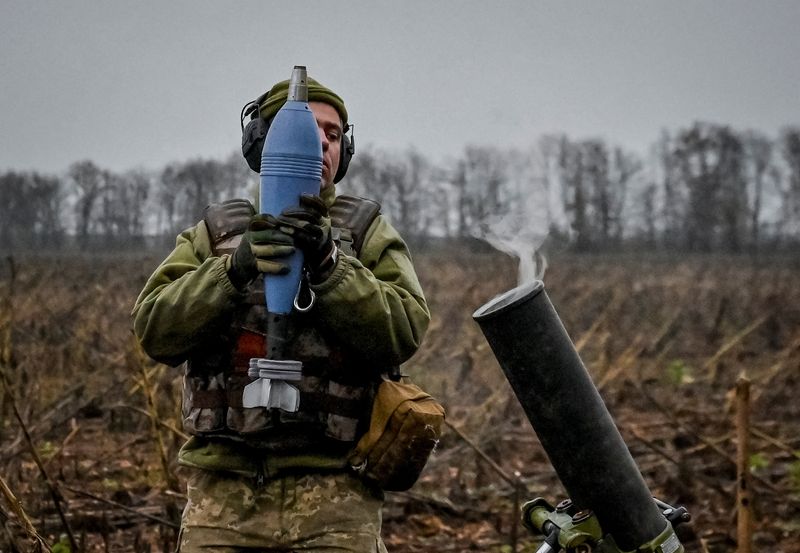By Max Hunder
KYIV (Reuters) - Ukraine has increased production of mortar shells from zero before Russia's invasion to millions per year now, but a global explosives shortage is constraining the push to ramp up the weapons industry, Kyiv's top arms official said.
Ukraine is trying to reduce its heavy reliance on Western military aid. Mortar shells, which are cheaper and work at shorter ranges than artillery, are an important weapon against the infantry-led assaults Russia uses to advance in the east.
Herman Smetanin, who was appointed strategic industries minister overseeing wartime arms production in September, told Reuters that Ukraine had increased production across various types of artillery as well as mortar rounds.
"However, this is still not enough," he said in his first published interview in Kyiv as minister.
Smetanin, just 32, was appointed after rising rapidly through the ranks at Ukroboronprom, the state-owned defence industry giant, where he became its chief in June 2023.
Ukraine, he said, had the capacity to make more shells but was being held back by global production bottlenecks and high demand that has created a shortage of explosives.
"The main problem we have now are powders and explosives. However much explosive comes into Ukraine, that's how many shells we will have."
Ukraine has tried to expand almost all aspects of its domestic defence industry since 2022, as its troops are stretched over a 1,000 km (620 miles) front by a much larger foe equipped by a much bigger military industrial complex.
The production figures represent a rapid increase for a country that did not produce any artillery or mortar ammunition before Russia's full-scale invasion.
Ukraine, Smetanin said, was now producing its own artillery shells, including the coveted 155mm calibre used by heavy artillery pieces donated to Ukraine by allied NATO countries. He declined to provide figures.
Ukraine's fledgling shell production is still far less than the output in Russia, which has been investing heavily in its military for years under Vladimir Putin and also inherited vast Cold War-era production capacity.
According to a CNN report in March citing NATO estimates and an anonymous European official, Russia was able to make 3 million shells a year, nearly triple the combined capacity of the United States and Europe.
Artillery, sometimes known as the "king of battle", has been the most important commodity on the front for most of the war.
Ukrainian commanders told Reuters earlier in 2024 they estimated about 80% of casualties on both sides since the war's beginning came from artillery.
Smetanin said that one of his main goals was to build up serial production of Ukrainian missiles, although he conceded this also faced global supply chain barriers which he did not go into detail on.

Ukraine announced earlier this year that it had successfully used both its own ballistic missile and a "drone missile" dubbed the Palyanytsia, which the arms minister compared to a cruise missile.
(This story has been corrected to fix the quote from 'the only' to 'the main' in paragraph 7)